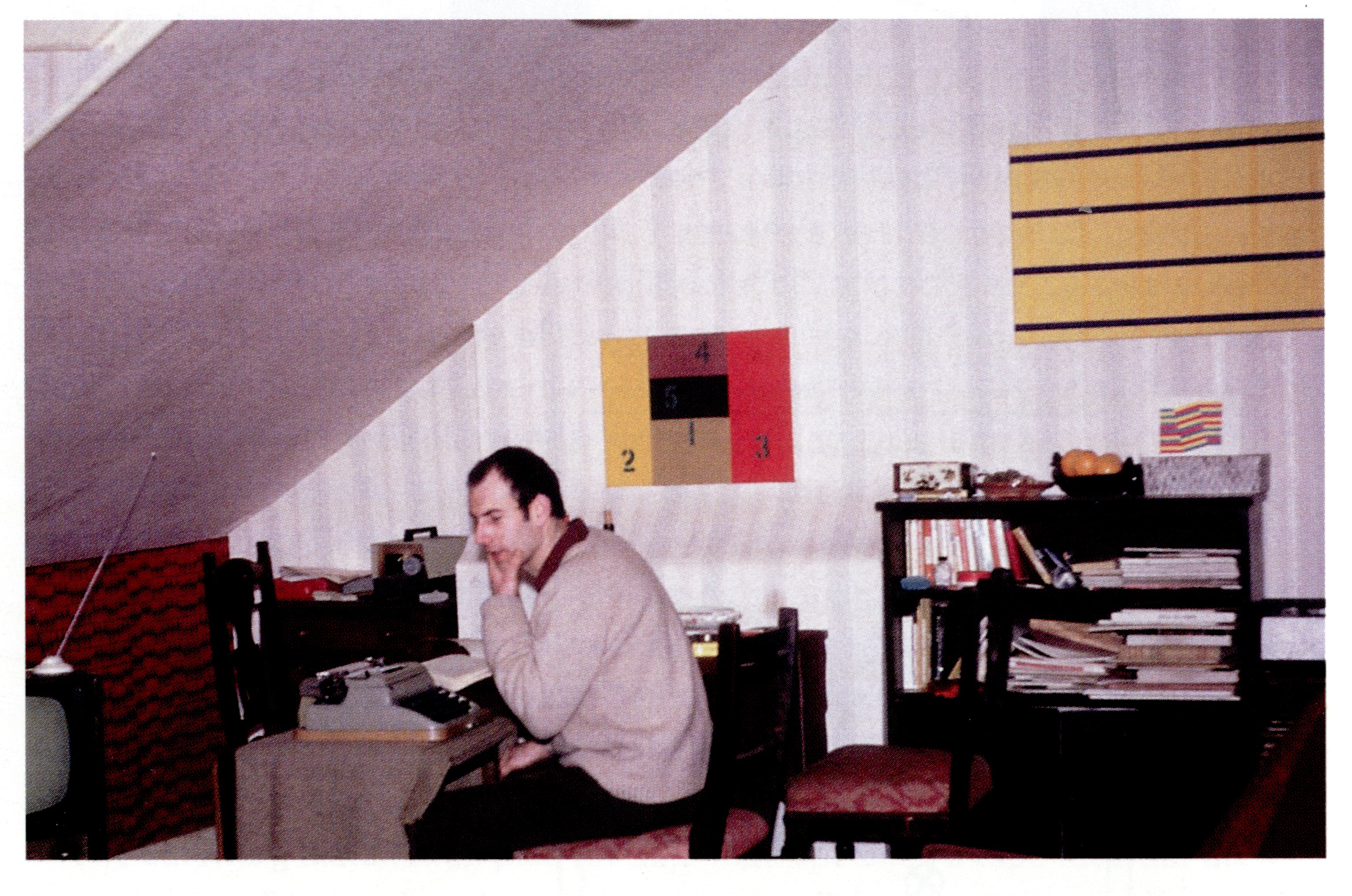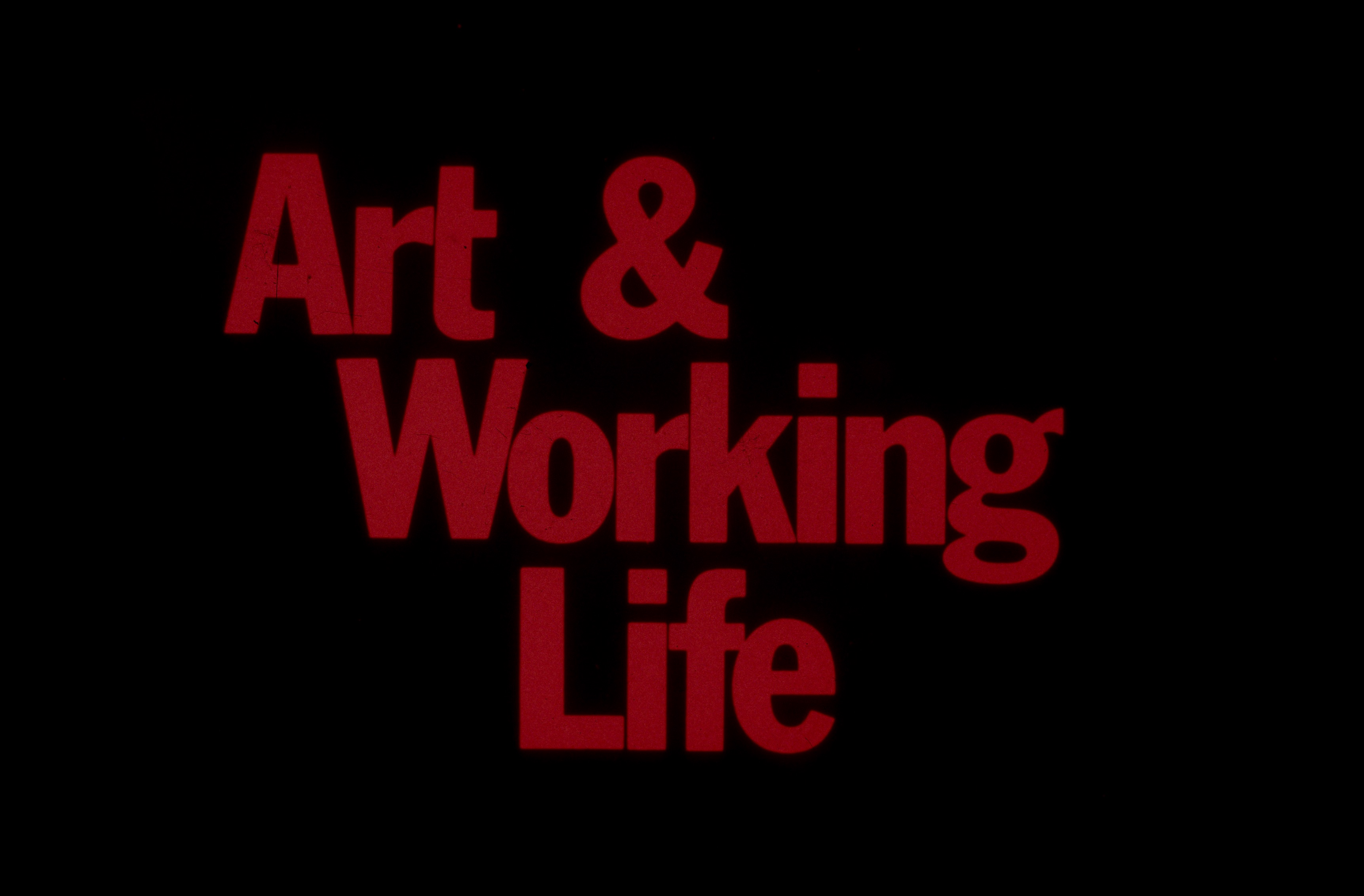
Ian Burn et al. is a long research query focusing on the legacy of Ian Burn, and the work of his network of peers. A series of public events, publications and writing follows:

Ian Burn et al. is a long research query focusing on the legacy of Ian Burn, and the work of his network of peers. A series of public events, publications and writing follows:
This document is published on the occasion of 1856 reproducing the Art & Working Life slide-kit for exhibition as a part of State of the Union, Potter Museum of Art on view until 28 October 2018.

The following slides from the Art & Working Life slide-kit are reproduced here from a copy sited in the archive of Ian Burn. The accompanying script has been transcribed from Art: Critical, Political, a book edited by Sandy Kirby in 1996 focusing on Ian Burn’s work in the Australian labour movement, as a key activist and historian of the 1980s. Only small edits and corrections were made and do not affect the integrity of the original, leaving the idiosyncrasies of Burn’s writing style intact. The kit itself was produced by Burn for Union Media Services, a design and communications company working for trade unions primarily ran by himself and fellow art workers Julie Clark, Ian Milliss, Lesley Pearson, and several others . The slide-kit’s purpose was to provide a short overview of the history of working class culture in Australia and give contemporary examples of the ways in which the Art & Working Life program was fostering cultural work in the labour movement.
As a joint initiative between the Australia Council for the Arts and the Australian Council of Trade Unions, the Art & Working Life program funded and promoted the creation of cultural activities by artists, art workers, and unions in and out of the workplace. As Burn and Kathy Muir wrote in 1992, the program aimed to ‘encourage art practice and policy which is informed by the concerns and issues affecting workers own lives and acknowledges working class cultural traditions and the multicultural nature of those traditions.’1 Terminated in 1986, it has an ambivalent legacy: some criticised it for catering too much to the desire of artists and the ‘values of the artworld’, while others saw it as an instrumentalisation of art for political aims.2
As an informational tool of this program, designed to be distributed amongst art workers, artists, and unions, its ideological claims are at the surface of its functioning and inherent to its purpose as a slide-kit. Below is Kirby’s introduction, outlining Burn’s use of parallel texts:
In 1984 Burn produced, through Union Media Services, an ‘Art & Working Life’ slide kit for the Australia Council, which he updated and revised two years later. Two texts were provided. One, to be read aloud, the other supplying more detailed back-up information on the projects, the artists involved and the policies supporting Art and Working Life projects. The optimist of the mid ‘80s is captured in the spoken text reproduced here with slides from the 1986 kit.
The second text is also reproduced but with editorial changes. Repetitive or additional information about publications (Badges of Labour, Banners of Pride - aspects of working class celebration; All Our Working Culture; Land of Promises; ‘Art & Working Life’, Caper 13; ‘Art & Working Life’, Caper 18; ‘Working Class, Working Culture’, Caper 19; ‘Loco’, Caper 23), photographic displays, film hire and music recordings has not been included. Union titles have been retained although amalgamations have lead to many name changes since the slide kit was prepared.3
—Nicholas Tammens
Kathie Muir and Ian Burn, Creative Alliances : Unions & the Arts : Art & Working Life in the 1990s, Sydney, N.S.W.: Union Media Services Pty Ltd, 1992 ↩
For further information, see Ann Stephen, On Looking at Looking: The art & politics of Ian Burn, The Miegunyah Press, 2006 ↩
Sandy Kirby, in Ian Burn, Art: Critical, Political, University of Western Sydney, 1996, p.11 ↩